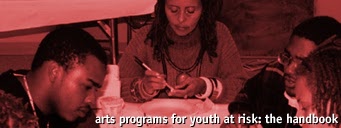


Forming a CollaborationPartnerships among arts agencies and public or private agencies that have expertise working with youth at risk benefit everyone. However, arts organizations, social service providers, educators, and juvenile justice staff each use different methods, languages, and ways of working with youth. Thus, it is very important for partners to learn one another's language; to understand the system within which each partner works; to be in agreement about program goals; and to define each group's contribution to the collaboration. In order to develop a collaboration that is effective in solving difficult problems, it is important for partners to reach agreement on the following questions:
We found that, by making everyone's assumptions explicit, the planning model was an effective tool to help partner agencies address these questions. For further ideas and approaches to building effective collaborations, see the pages 74-76 of the full chapter (in PDF format). More Resources:
|
|
|||||||||||||||||||||
